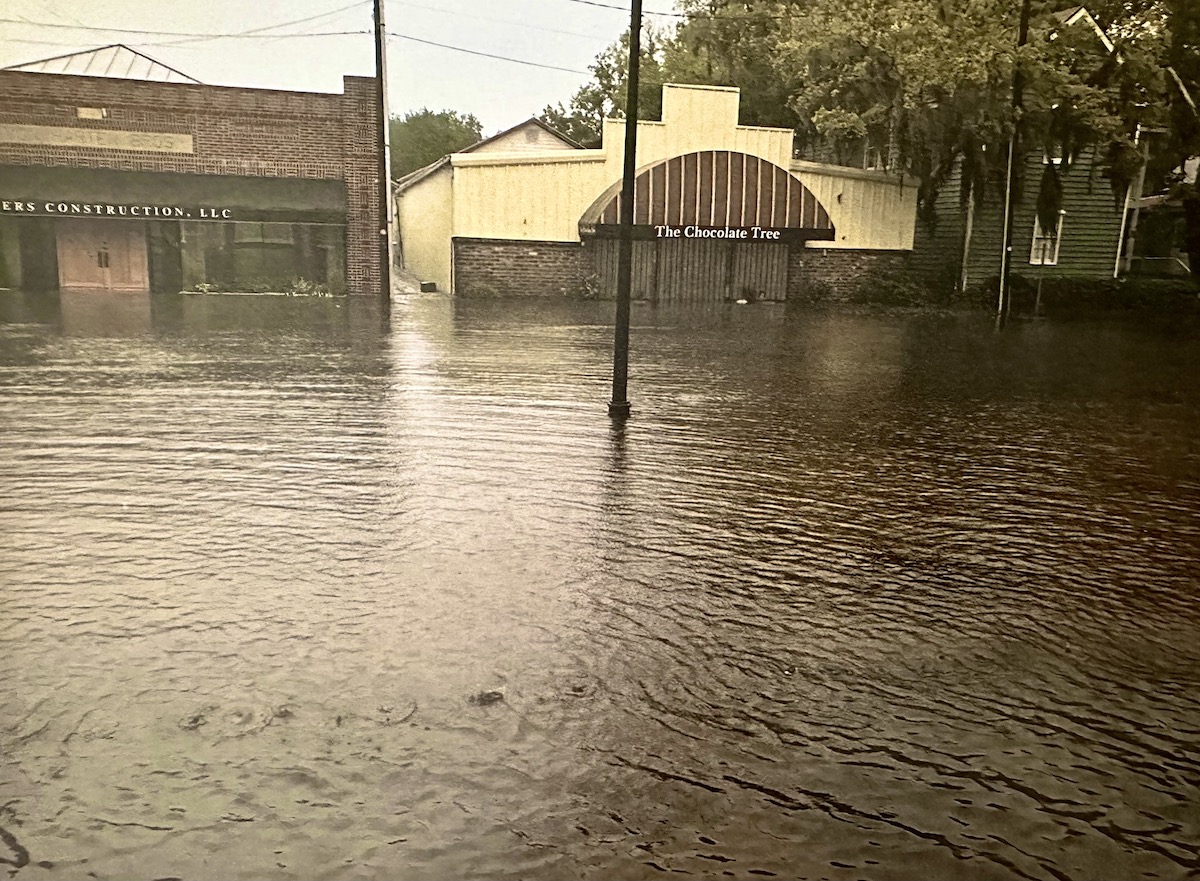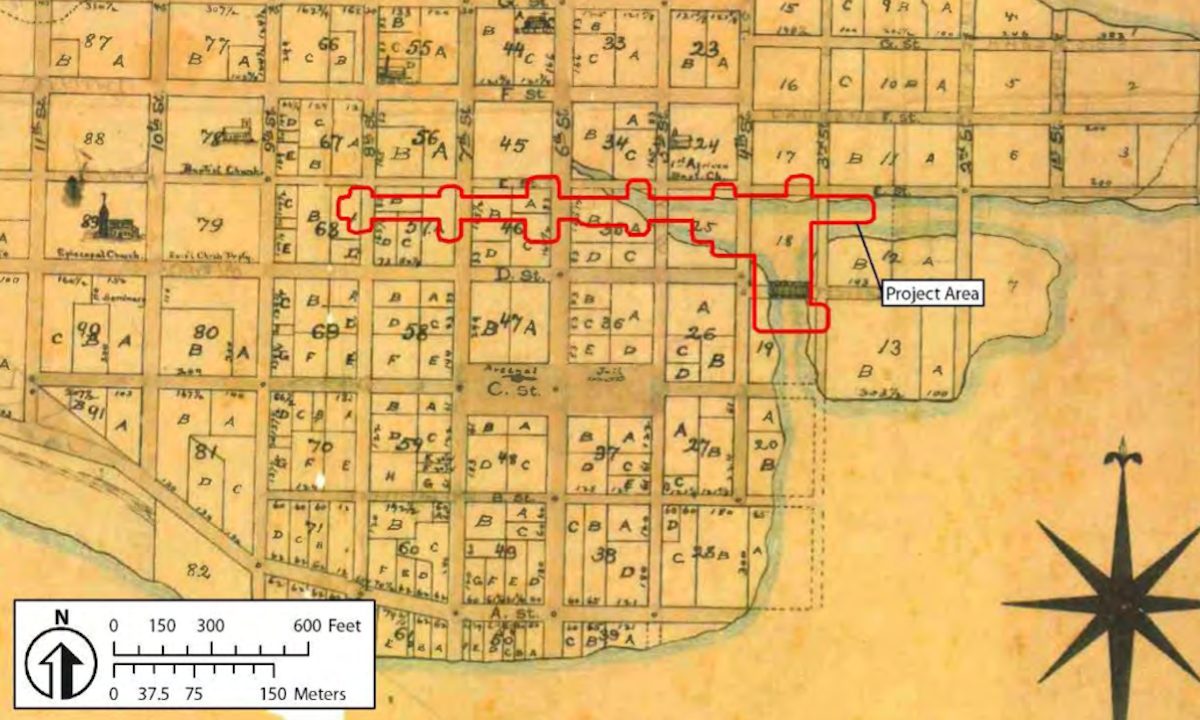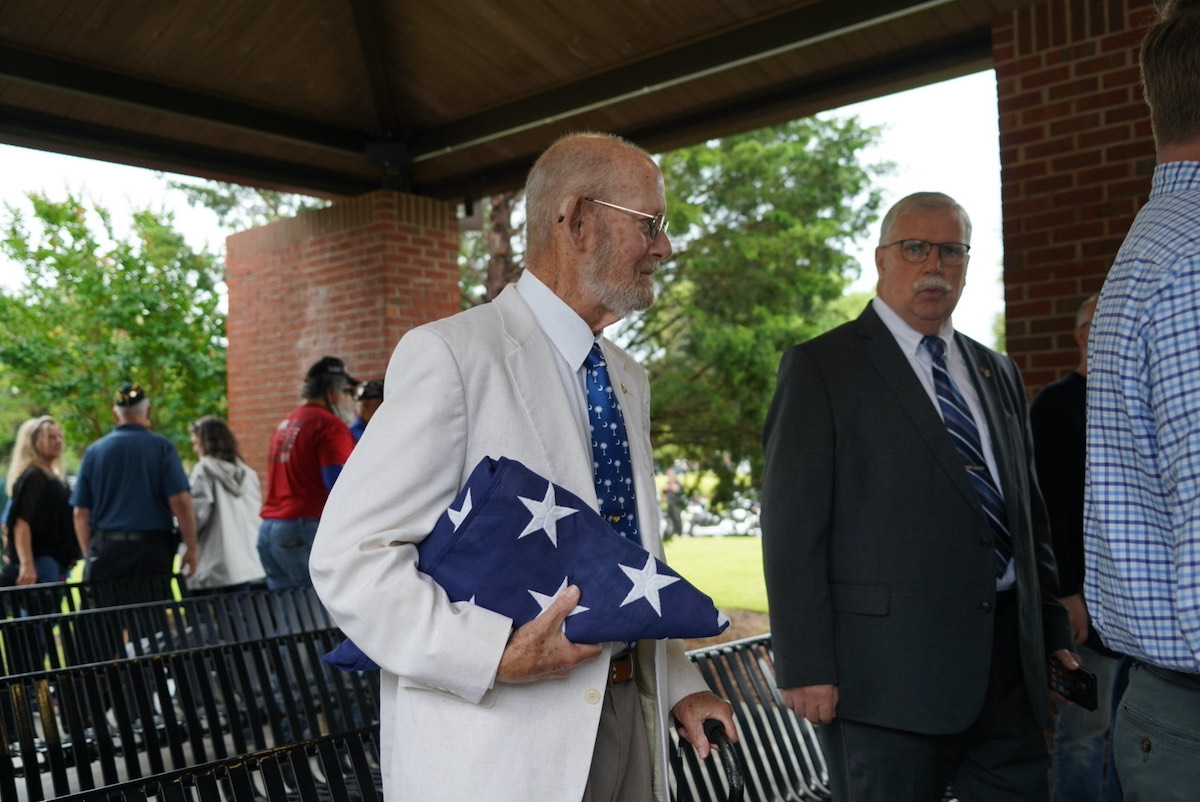The very citizens project is meant to help search for reasons to oppose it
By Scott Graber
The Island News
Beaufort’s “Old Point” neighborhood is a collection of porched, corniced and columned homes that date back to 1720 when Thomas Hepworth built his modest house on New Street.
Hepworth, Chief Justice of the Colony, cut vertical slots into his foundation to facilitate musket fire when the Yamassee were restless. More than hundred years later — after the Yamassee had been subdued — a man named Rhodes built a slightly larger house several blocks to the north.
These days the Rhodes house, sometimes called “Little Taj”, overlooks a tidal pond that has become the epicenter in a battle between those who want to improve drainage on Beaufort’s Historic Point; and those who think these efforts are unnecessary.
On Wednesday, May 8, 2024, a meeting took place in Beaufort’s City Hall just off Boundary Street. The purpose of that meeting was to get conceptual approval from the Historic Beaufort Review Board.
This meeting focused on two proposed buildings — one containing equipment that will control two pumps; the other containing a generator; both to be located in a small park (called Knott Park) adjacent the pond on the Point.
The pond in question now collects run-off that originates on 40 acres of paved streets, parking lots and rooftops throughout downtown Beaufort. That collected rainwater then runs in an Easterly direction paralleling King Street, passing under Carteret Street, and then enters the Old Point Neighborhood.
Eventually the stormwater ends up in the pond which was improved by the Civilian Conservation Corps in the 1930s. In recent years, however, the pond has proved inadequate. And on at least three occasions (2022-2024), stormwater poured into King Street, and in the case of Hurricane Irma in 2017, stormwater backed up and flooded Carteret Street.
The engineers at Davis and Floyd have been studying this pond and this neighborhood for several years noting that the elevation, 4.5 feet in this part of the Point Neighborhood, has been exceeded by the tide on 93 occasions in a 442 day period in 2022 and 2023. “Pumping is the only method that can reduce in-street flooding when rain and higher tide events coincide.”
The “Point Drainage Project” will upgrade the pond by providing pumps that will — prior to a “rain event” that coincides with a high tide—remove some of that water. This removed water will then allow additional capacity in the pond during the subsequent storm.
The Point Drainage Project — to be paid for by grants totaling $9.46 million — has been criticized by various residents (on the Point) notwithstanding the fact that it is designed to relieve flooding on the Point. These folks have questioned the rainfall data; the math applied to that data; and argue that the flooding is not as frequent or as severe as is depicted by the City. A petition has been circulated and has about 300 signatories.

The engineers hired by the City, Davis and Floyd, say that the Point Drainage Project will increase the capacity of the pond and it is the same pumping concept that has been used in Mt. Pleasant, Charleston, Savannah and Georgetown. The engineers say that “The implementation of these pump stations resulted in substantial improvements in drainage performance” and have reduced flooding in each of these coastal cities.
At Wednesday’s meeting the capacity of the pond was not the issue. Rather it was the placement of two new buildings in the park adjacent the pond. The Review Board first looked at a plan that had the “Gear House” in the Southeastern corner and “Generator House somewhat removed toward the Southwest corner. But after lively, lengthy debate between the five Commissioners — and input from local architect Rob Montgomery and Davis and Floyd engineer, Mike Horton — it was (conceptually) agreed that these two buildings would both be located in the Southwestern corner of the park thereby saving a large cypress tree and the view of the pond; the Beaufort River and Lady’s Island in the distance.
After the Review Board’s decision there was a second presentation, this time involving Old Point residents who had come to City Hall to voice their concerns and deliver their Petition in opposition to the Project.
Approximately 60 people jammed themselves into a conference room on the 1st floor designed to hold two dozen people. Many of these folks appeared ready to engage the Davis and Floyd Engineers who had been summoned by the City of Beaufort to explain the Project.
The second meeting began with another presentation by Mike Horton, Chief Project Engineer of Davis and Floyd, who took his audience through dozens of charts, renderings and the flood data collected over the years.
After Horton’s presentation, Stephen Murray, former Mayor of Beaufort, made an eloquent appeal to those in the small conference room, saying future residents of the Point, including his own children, would benefit from the Point Drainage Project.
Others, however, spoke about damage to property values; questioned whether or not Carteret Street had actually flooded; and asked Horton if a second pump was necessary. Finally, one resident said that 300 residents who had signed the petition did not want the project.
Murray then picked up what appeared to be a copy of the Petition, saying, “Even my son could see the bias in this paper …”
Horton came in a dark suit, tie and wore thick-rimmed glasses answering the questions simply, using tables and charts that demonstrated what was going to happen if nothing was done; or what would happen if the pipes were only cleaned-out or resized. He spoke at length about what could happen if the second pump was eliminated, He would say, “Point noted” when an unhappy resident made an argumentative or combative comment that was not a question. Horton dealt with the crowd with quiet professionalism.
This meeting was in pleasant contrast with recent City meetings where tempers have flared and comments have been threatening.
Throughout these two meetings there was reference to the approved federal funding — $9,460,299 — that must be expended by December 31, 2026. Several times residents spoke to this issue and Beth Grace, former member of County Council, suggested that South Carolina’s two U.S. Senators should be approached about getting an extension on this spending deadline. However, J.J. Sauve, Assistant City Manager replied, “We are mindful of the short time frame, but it is more important that we get this right …”
Scott Graber is a lawyer, novelist, veteran columnist and longtime resident of Port Royal. He can be reached at cscottgraber@gmail.com.









